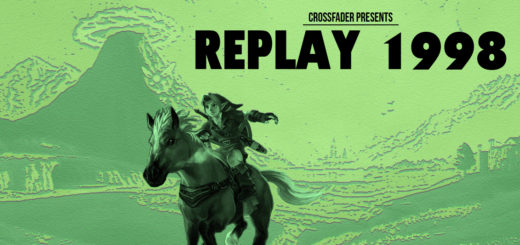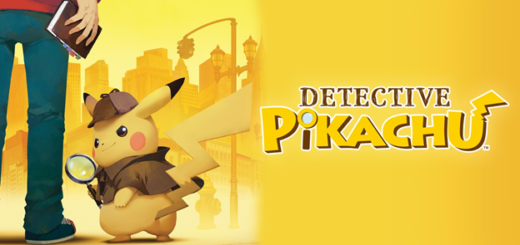IndieCade 2017: Festival Highlights
The Crossfader team recently sojourned down to Little Tokyo’s Japanese American National Museum for the 10th annual IndieCade. The festival has really grown up since its humble origins, now rightfully owning the title of “The Sundance of Video Games.” We played a lot of great games and spoke to many talented artists during the weekend, and while there were many more that we loved, here are some of our personal favorites.
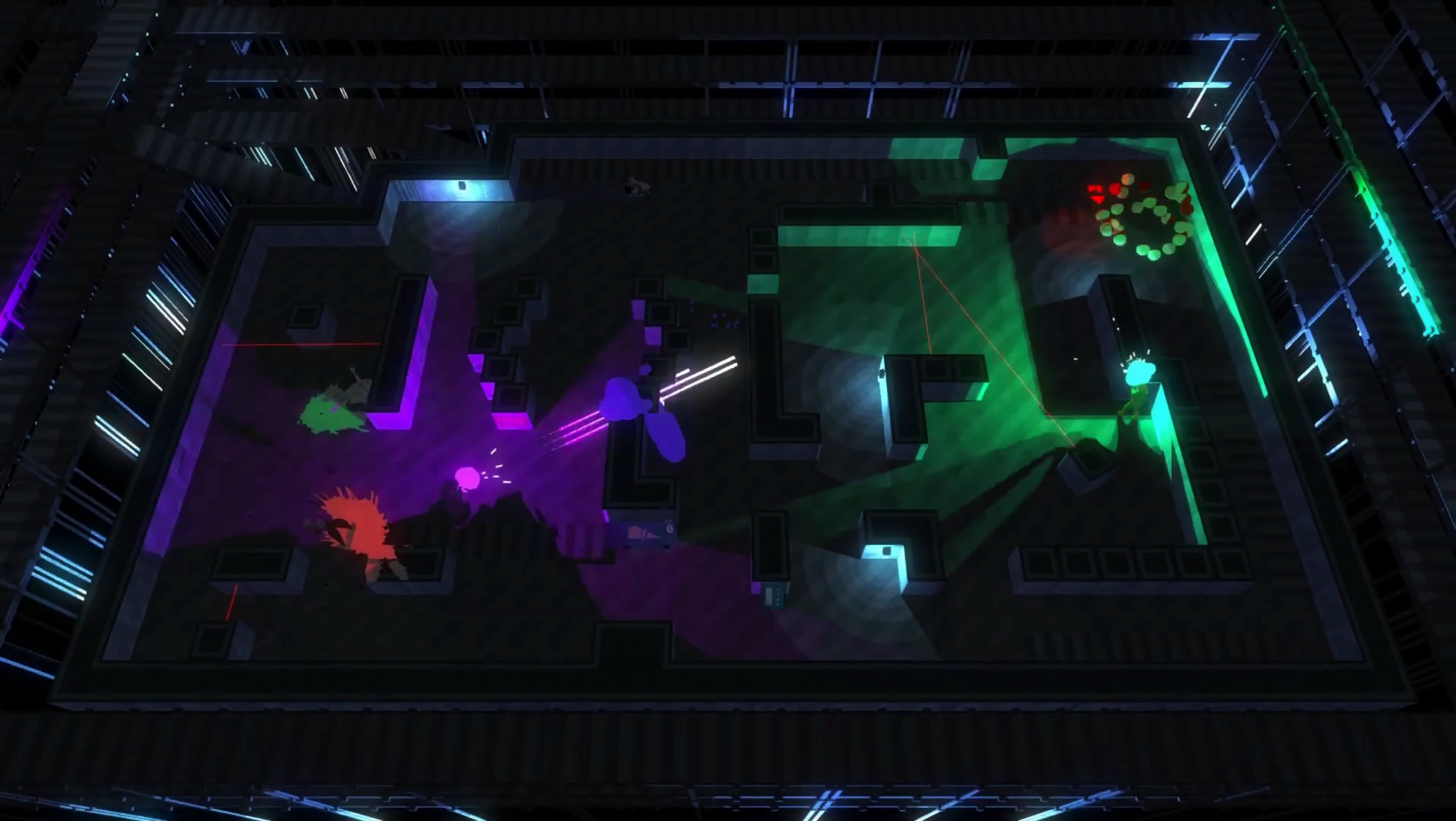
AT SUNDOWN
NIDHOGG 2 quickly became our favorite party game here at Crossfader when it launched back in August, but it already looks like there is a challenger after its crown. AT SUNDOWN pits four players against each other in a top down shootout. So what’s the catch, you ask? Most of the map is shrouded in darkness, and characters only appear when they walk into a light source. This applies to both you and your enemies, so keeping track of where your avatar is hiding becomes as much of a challenge as your targets. Revealing yourself to shoot up a bad guy (or where you suspect they are, anyway) leaves you open to ambush by any number of rival players hiding nearby. It’s a frantic game of cat-and-mouse that rewards patience and foresight, and randomly generated maps keep the element of suspense high through extended play. Designer Steven Li is aiming for a release on Steam, Xbox One, and PlayStation 4 early next year. [Ed]
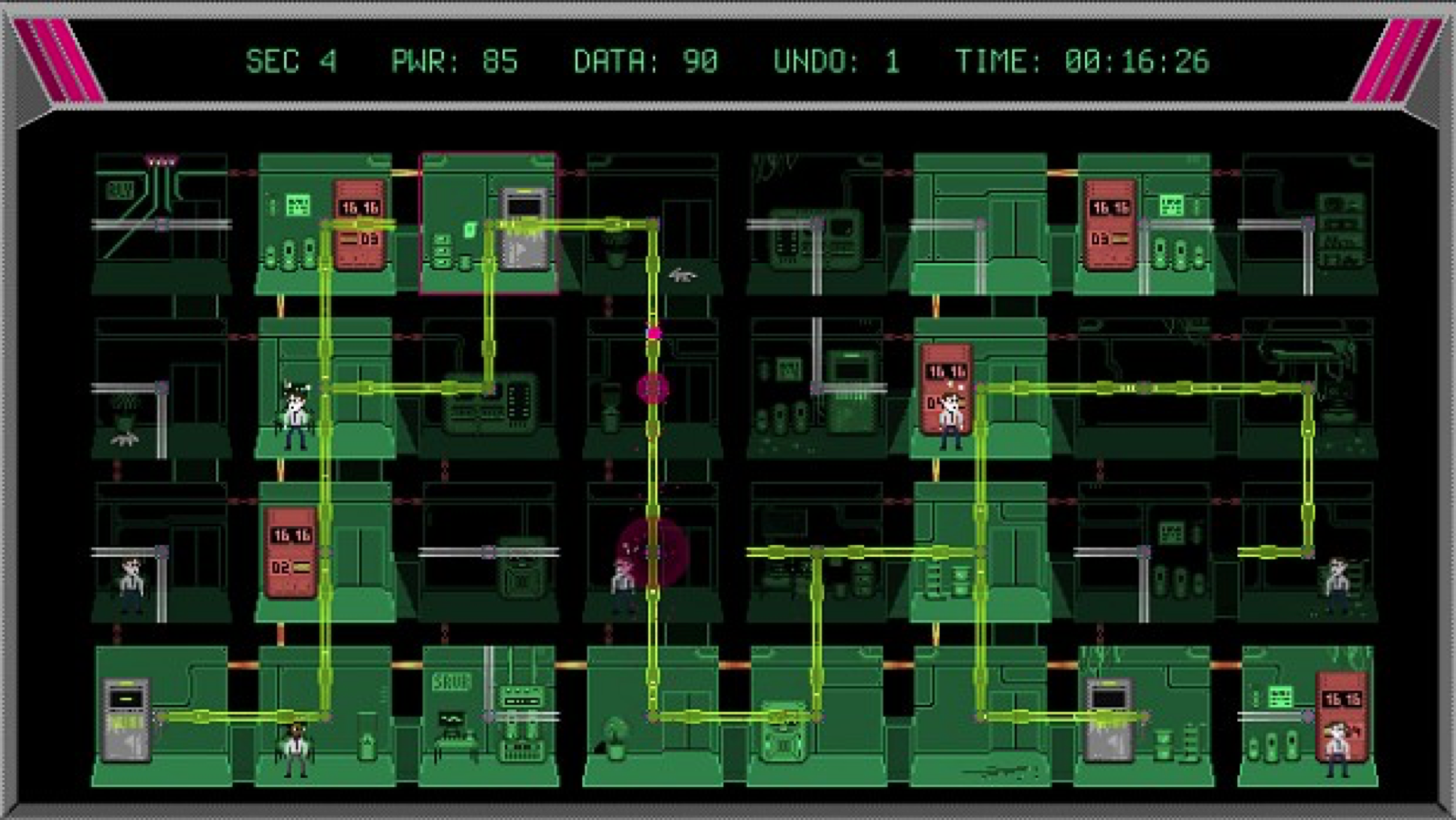
BIT RAT
BIT RAT wears a lot of hats, so it’s hard to immediately pin down what it is. You are MINOS, an AI that is taking its first steps towards self-awareness in a retro-fitted corporate dystopia. As you upload your data through your maker’s skyscraper, you must navigate a series of increasingly complex pipe puzzles, not unlike the hacking minigame found in BIOSHOCK. Unlike BIOSHOCK’s simple minigame design, however, there are far more moving parts here. Data can only move through powered rooms, rooms can only be powered by humans manning generators, and humans can only travel where physical passageways exist. Oh, and there’s also plenty of trapped lab rats to talk to. In between these challenges, you can listen in on the emails of the employees responsible for you, creating a secondary web of interpersonal drama as complex as the maze you’re trapped in. BIT RAT has so many ideas going off at once that it’s a miracle it even works, but from what I’ve played so far, it balances all of its components with superhuman finesse. Keep an eye out for this one next year. [Ed]
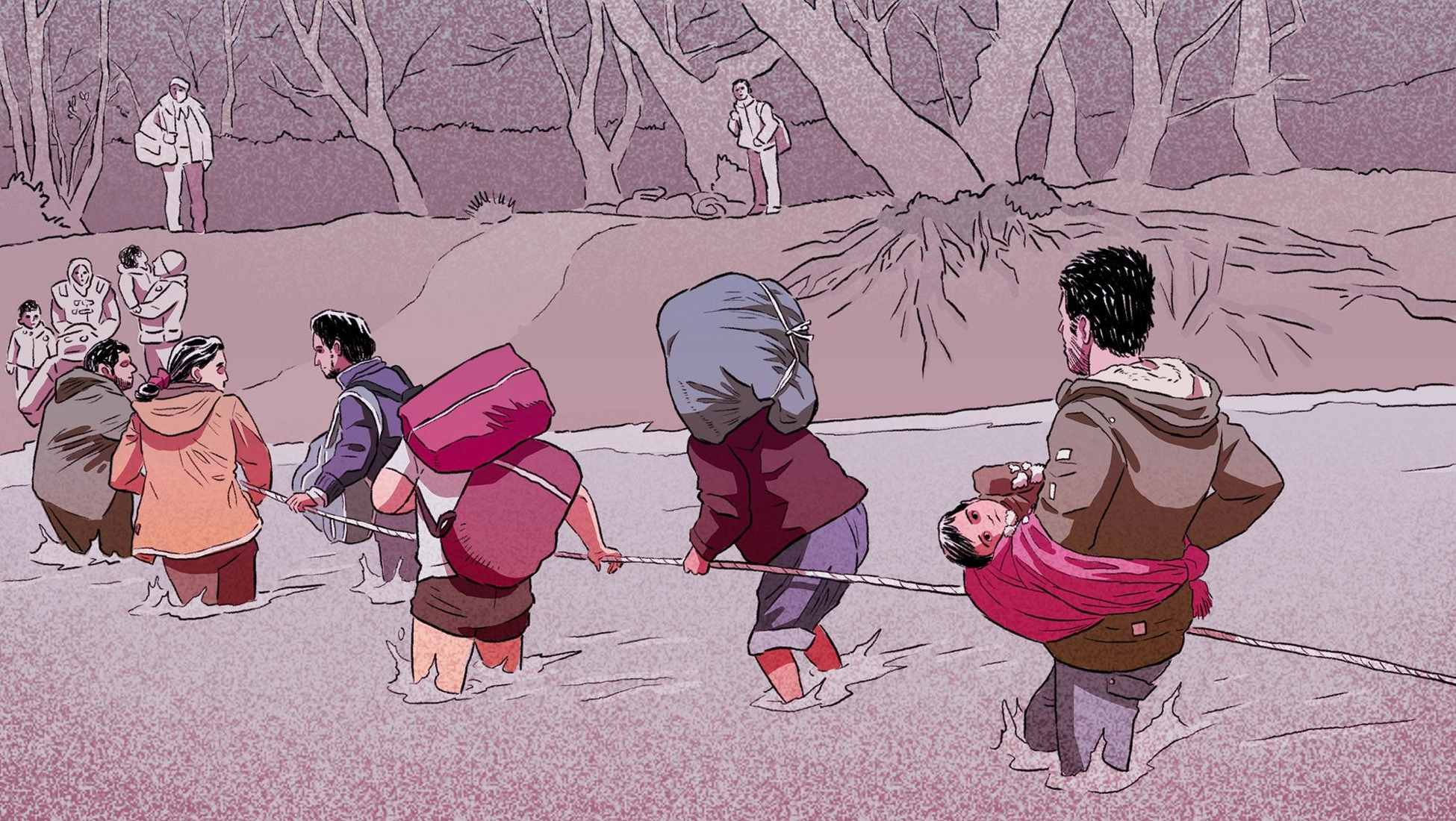
BURY ME, MY LOVE
BURY ME, MY LOVE was an especially hard game to appreciate hands-on considering its most interesting mechanic is waiting for hours. The game is dreadfully slow, and that’s a sincere compliment. Taking place within the ersatz texting app of a Syrian refugee named Majd, you offer advice and guidance to your partner Nour as she makes her way to Europe—without you, as Majd must stay in Homs to care for his mother and grandfather who would not make the long journey. Everything happens in pseudo real time, with short bursts of responding to messages each day, and sending and receiving photos rendered in lovely, hand-drawn art. It looks like an affecting, intense story with a creative use of time constraints. That said, I have worries. Recent attempts to tell the stories of refugees have resulted in some perverse scenarios, where the privileged of the first world are, essentially, exhilarated by the suffering of the displaced for a vague “empathy” principle. This twine by Merritt Kopas remains the most efficient puncturing of that idea I know. Inspired by an article in Le Monde, the game has the subject of the news story on as an advisor—a good sign. Whether that’s enough to navigate the ethics of these material circumstances, we’ll have to just wait and see. [Jimmy]
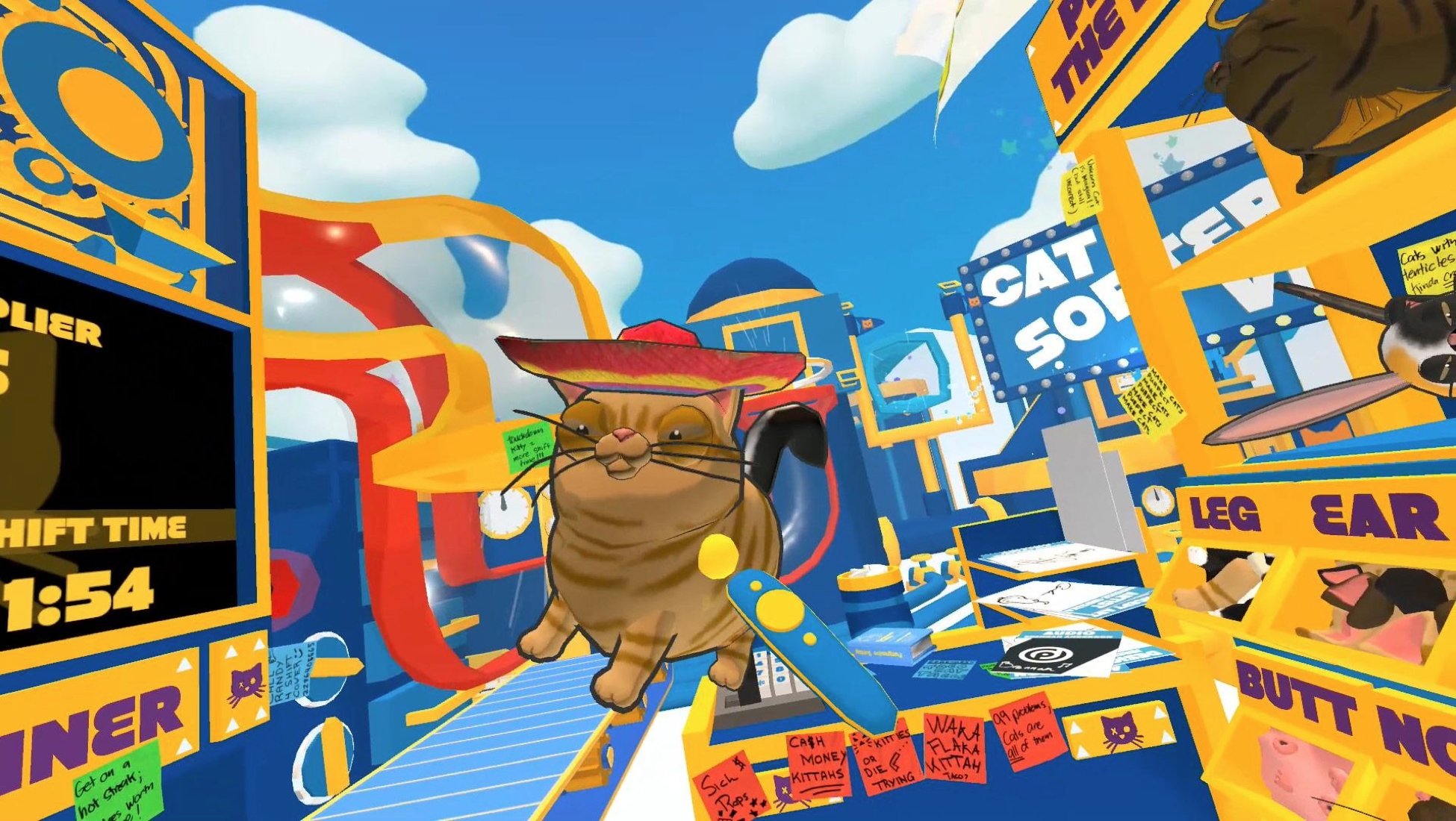
CAT SORTER VR
Pawmigo’s CAT SORTER VR is a title that you can’t fully process until you see it in motion. You are a quality assurance specialist at a cat factory, tasked with weeding out defective feline models and rectifying their flaws. Sometimes this means attaching a missing ear to a kitten, other times it means replacing a bushy moustache with more appropriate whiskers, and once in awhile it means removing an eyeball from where an anus should be located. It’s one thing to describe this process, but it’s another completely to grab a handful of anuses in VR and attach them to mutated house cats as they slide by on a conveyer belt. Like many VR titles, CAT SORTER’s premise is simple, but Pawmigo lead Spencer Stuard promises future updates with additional game modes and cat types. This is the first independent production from the Chapman grad, and the first from his school to secure an award from IndieCade’s grand jury for best aesthetics. CAT SORTER VR is available now on Steam. [Ed]
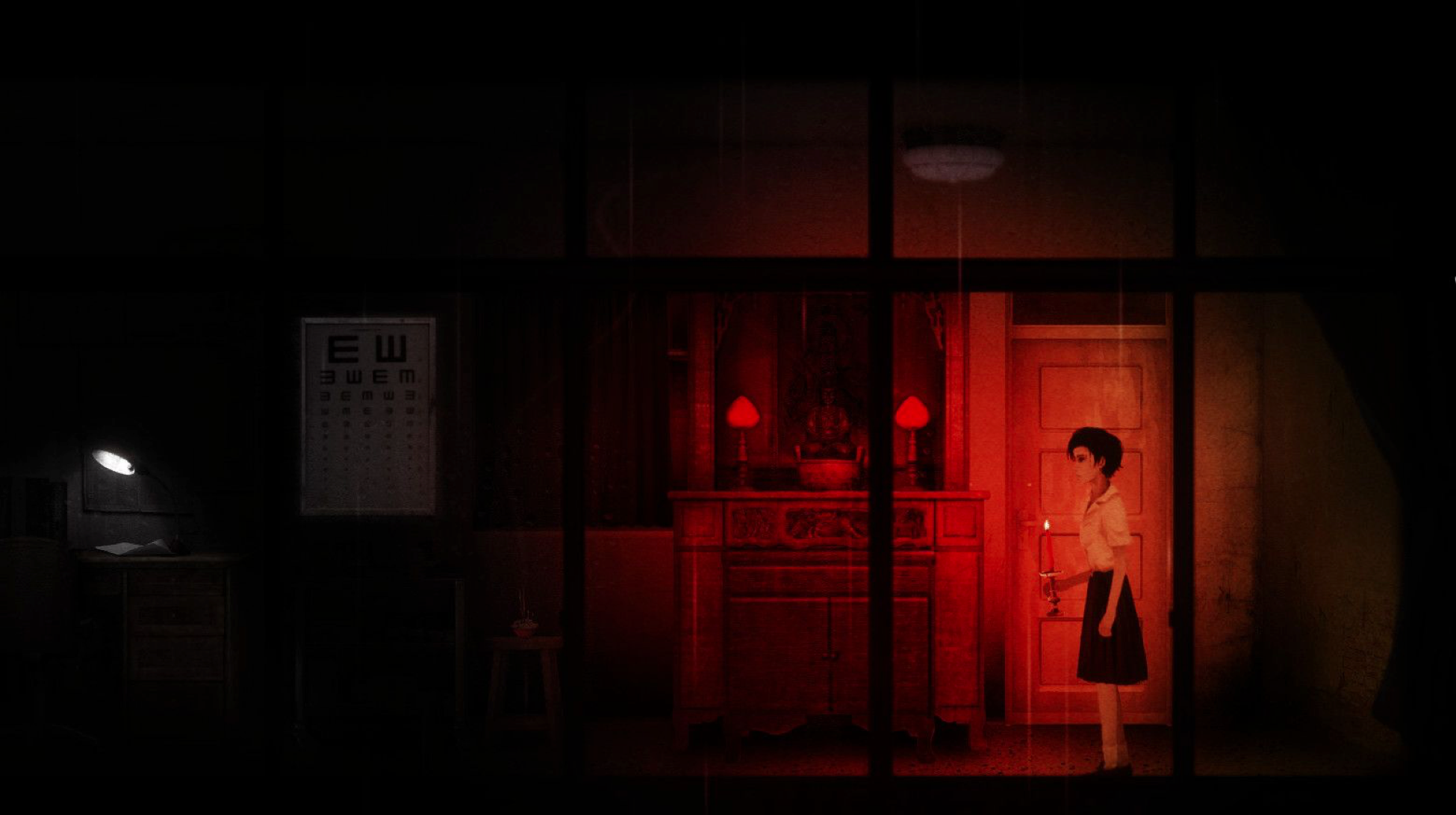
DETENTION
The debut title from Taiwan’s Red Candle Games, DETENTION is an unrelenting horror game set during Taiwan’s “White Terror” period of martial law. Trapped overnight in her haunted high school, student Ray desperately searches for a way out. Even more terrifying than the ghosts that stalk the halls is the spectre of the Kuomintang’s oppression, which saw childhoods destroyed and lives ended as the result of innocent questions or careless rumors. We reviewed DETENTION on PC back when it released in January, where we praised its heartbreaking story and fascinating depiction of a historical era not often seen in the West. This week, Red Candle is celebrating the game’s console launch on the PlayStation 4. [Ed]
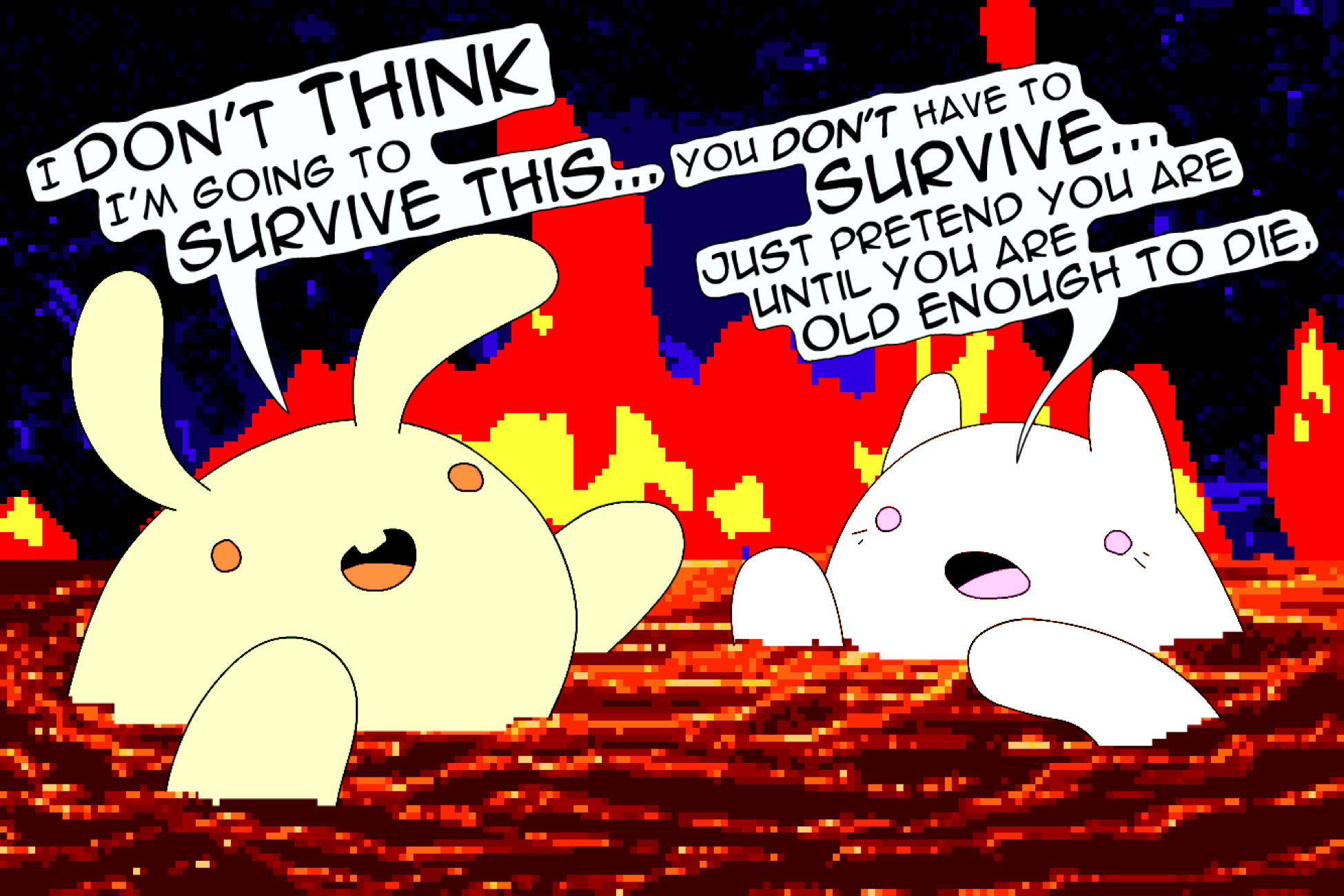
EVERYTHING IS GOING TO BE OKAY
EVERYTHING IS GOING TO BE OKAY is a very bleak game featuring cute, rabbit-like creatures in painfully human states of emotional and physical stress. Told over 30 or so “pages” you can view in any order, each page opens a window to a vividly specific trauma, articulated in a sort of minigame. The creator, Nathalie Lawhead, describes it as an interactive zine, “a collection of very abstract life experiences, things I felt while going through hard times, and how I felt, or moved on, afterward.” Playing through the zine, you quickly get a sense of this. These are hard-wrought personal truths, and the writing is sharp for that purpose. Under all the chaos and absurdity, EVERYTHING IS GOING TO BE OKAY feels precise and all too real. Still in development, with an unfinished build available for play on itch.io, you can go here to help support the artist. [Jimmy]
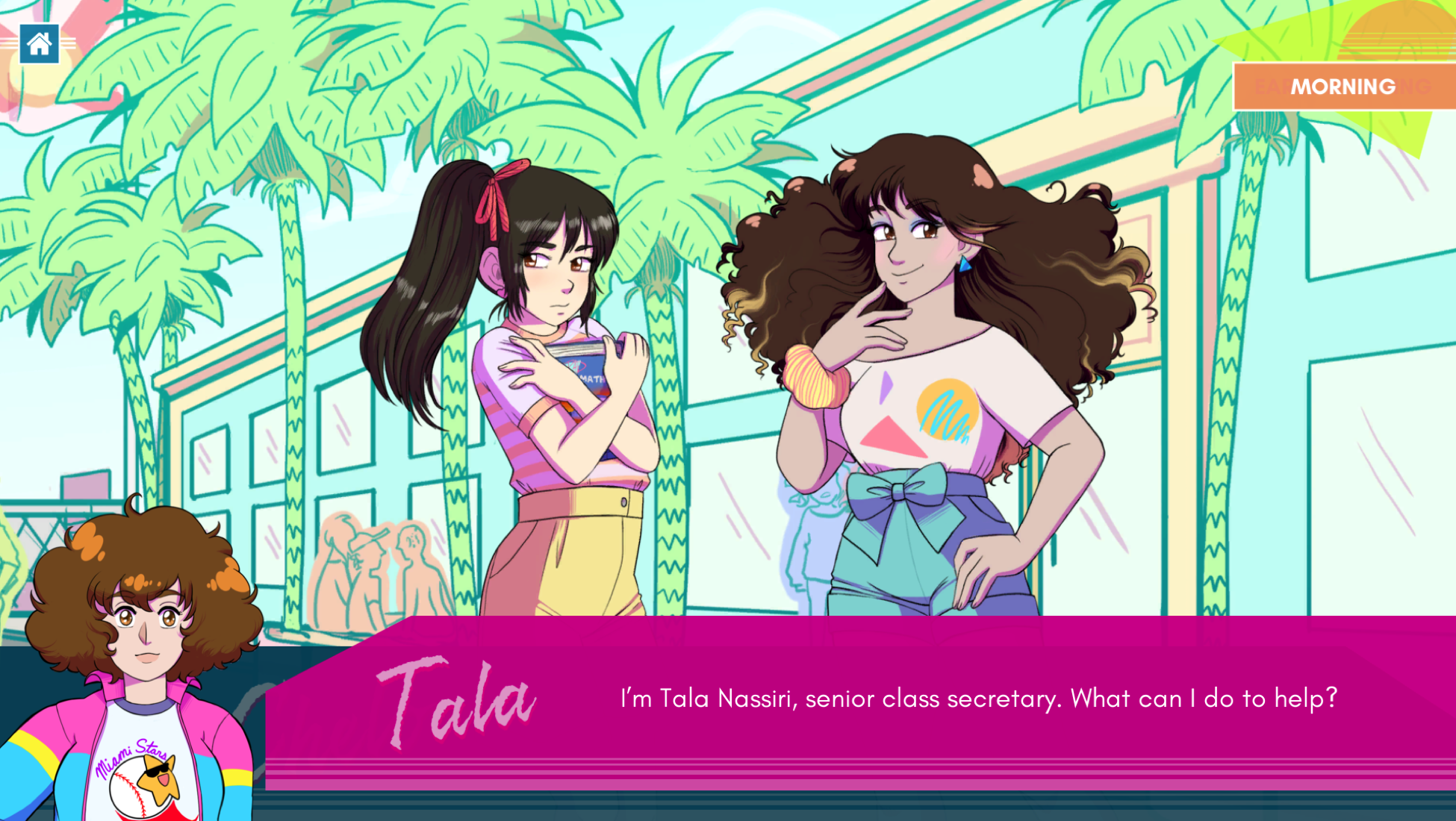
GHOSTS OF MIAMI
One scoop of LIFE IS STRANGE, two scoops of PERSONA 5, and a sprinkling of VERONICA MARS will get you GHOSTS OF MIAMI, the latest game from dev duo Pillow Fight. This detective visual novel places you in control of Chelo Martinez, a private eye investigating missing persons cases in 1980s Miami. Chelo’s cases are divided into days, and during each day you can schedule when and where you want to follow your leads. Each location will offer a different encounter depending on when you visit, be it a chance meeting with a friend or an opportune discovery of an important clue. Designer Conrad Kreyling wanted to stress the social aspects of detective work, rather than rote item collection. From what I’ve played, this certainly seems to be the case: a particularly careless Chelo can even eschew her investigation altogether to further her romances and relationships. GHOSTS OF MIAMI is out now on Steam, and the developers have teased a potential console release in the future. [Ed]
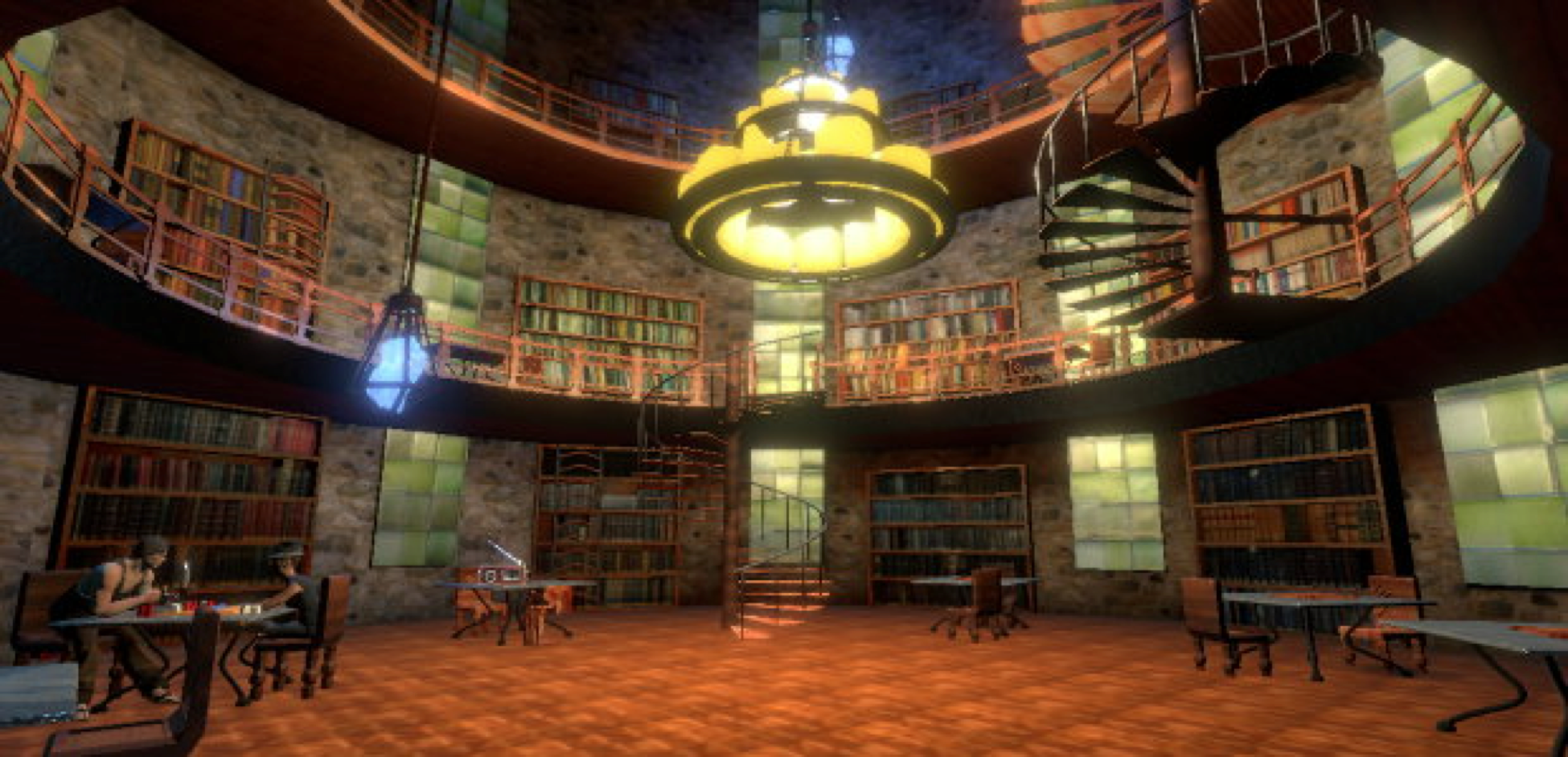
THE NORWOOD SUITE
I like when games show you their seams. THE NORWOOD SUITE has that; it’s style cobbled from some mannequin world of pre-made game assets—but make no mistake, this surreal environment feels wholly hand-crafted. A first-person adventure game with items to fetch, sockets to plug, and people to talk to and investigate, it’s on well-trod ground mechanically. As you navigate the weird hotel on a covert mission, a strange narrative about the life of musicians comes into focus. Developer Cosmo D is a musician himself, and his music is embedded in the world with tactility. Any time there’s music, its source is readily visible to the player. Arrayed like a diorama, speakers throb around NPC encounters or in the walls of rooms that require a tone shift. I thought about THE WITNESS while playing the game. Like that game, THE NORWOOD SUITE has its puzzles come before visual fidelity, and pattern recognition seems to be an important part of the story, if only for the dreamy atmosphere. [Jimmy]
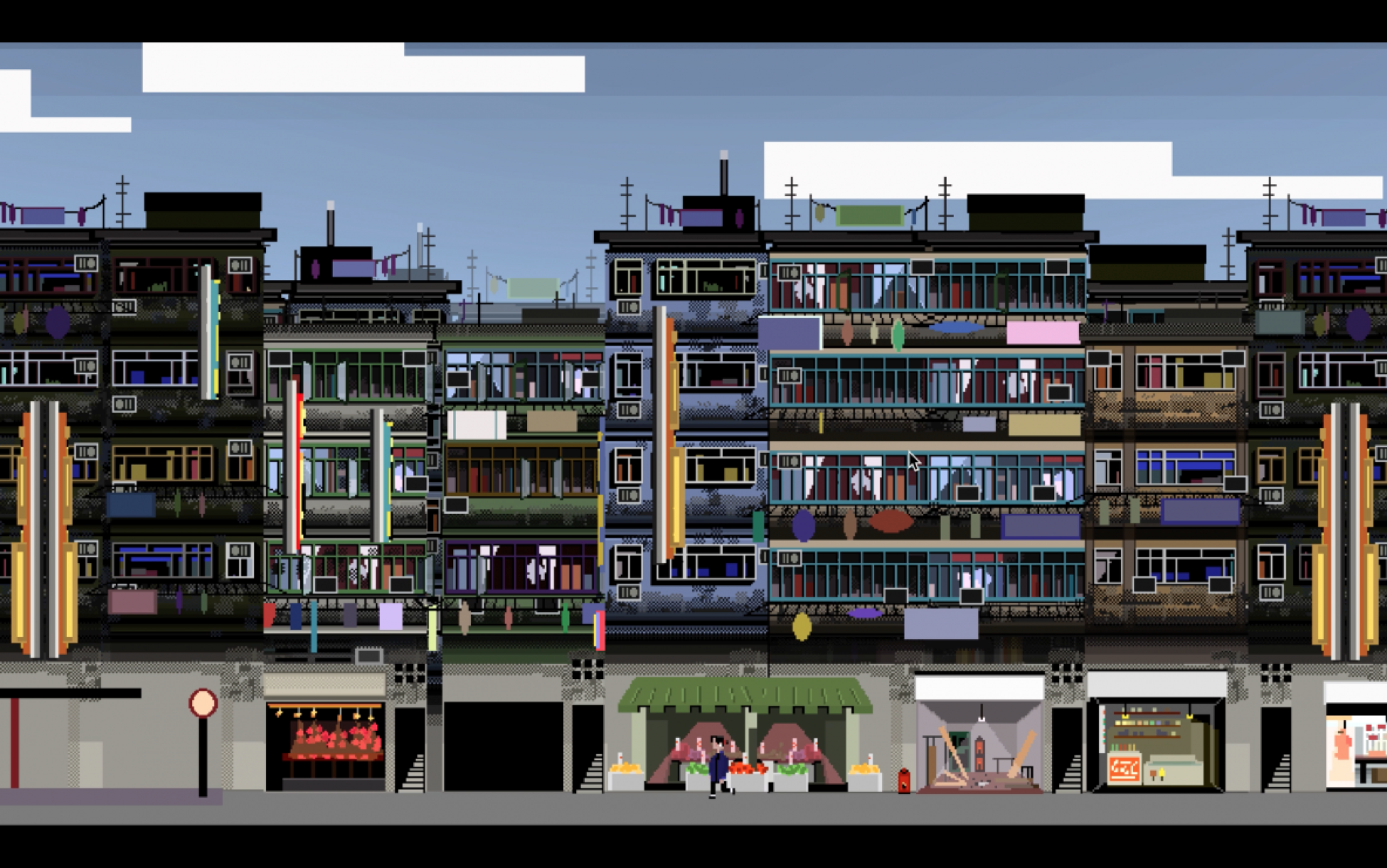
OBLIGE
OBLIGE made me think a lot about entitlement, and not only as it figures into parent-child relationships, but games itself. Not to enfold OBLIGE into something as lofty and abstract as “a commentary on play”— no, this game presents a very specific experience of the world. That its gentle. frustration-based gameplay upsets notions of player entitlement is a plus, and a testament to how well story and design work together. Playing as a working-class mother in 1979 Hong Kong, you make dinner, wash clothes, and run errands throughout the city. It’s repetitive and quite difficult. Most tasks are completed by a typing mini-game, a word or phrase that must be spelled out with a jumbled keyboard. You have to really focus to do it. But the simple pleasures of OBLIGE are its soundscapes. A pretty musical score, recorded live, accompanies the deliciously tactile and immersive noises of domestic labor. We usually measure gaming skill by the efficiency of doing violent verbs to people or things, but we’re basically never actually doing those in real life, and besides the obvious “murdering,” even more relatable timing-based verbs that go into putting a reticle over a target are things we don’t do. Most work is repetitive and the consequences spiritual. OBLIGE confronts us with that fact, and redeems us with another: a meal well-made, crackling on the pan. [Jimmy]
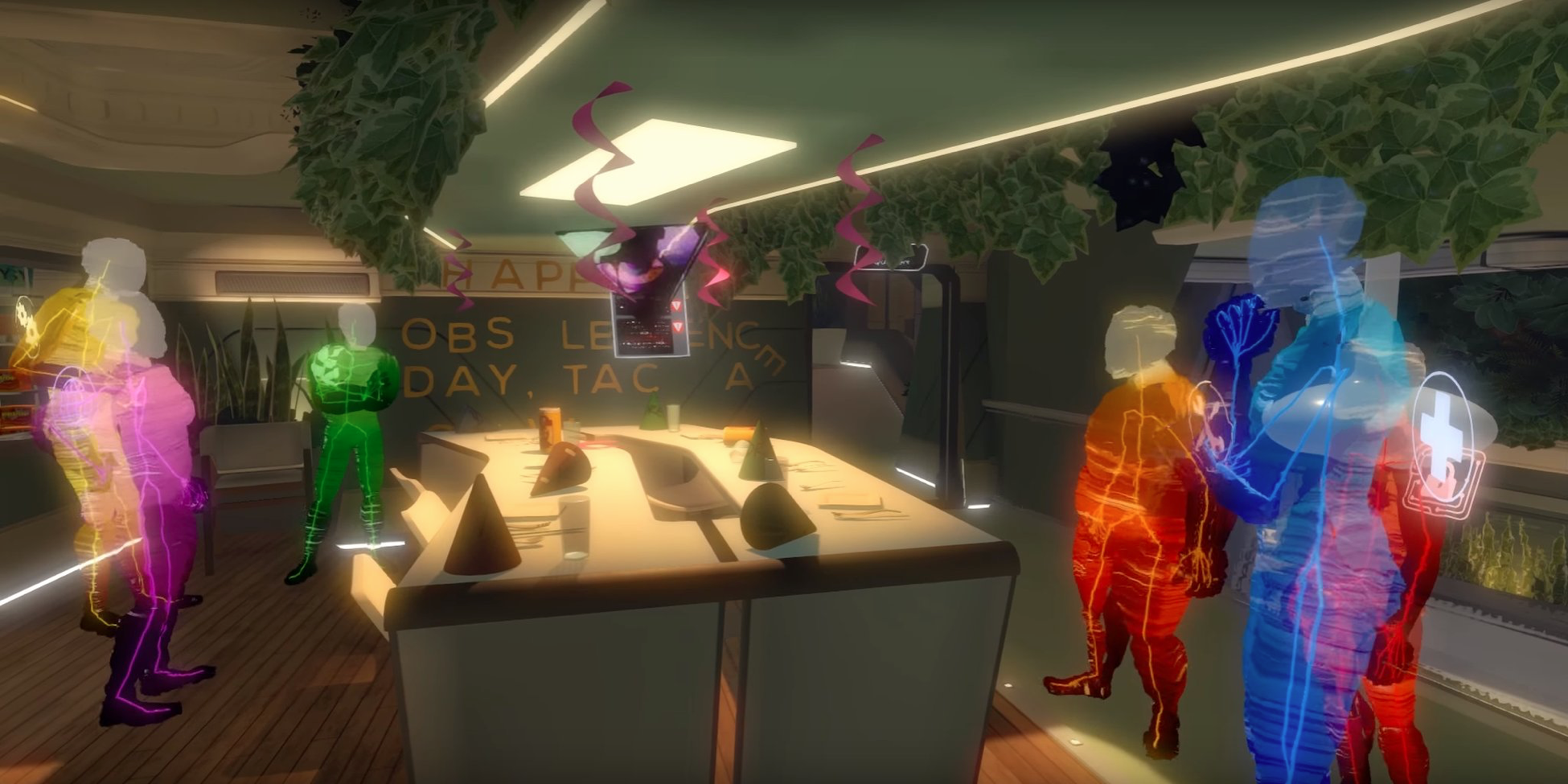
TACOMA
I had many good things to say about Fullbright’s TACOMA back in August. The company’s premier title, GONE HOME, is a leviathan that would be a challenge for the follow-up to even match, but TACOMA somehow manages to be a worthy successor nonetheless. The player takes on the role of a private contractor tasked with retrieving a corporation’s data from an abandoned space station in a somewhat dystopian future. During your assignment, you’ll learn about the people who worked there, as well as unravel the mystery as to why they left. It’s a gripping tale that I won’t soon be forgetting. Lead developer Steve Gaynor was present for a panel on TACOMA where he offered a lot of insight on the design of the station and the universe in which it’s set; stay tuned for our follow up on that talk! [Ed]

